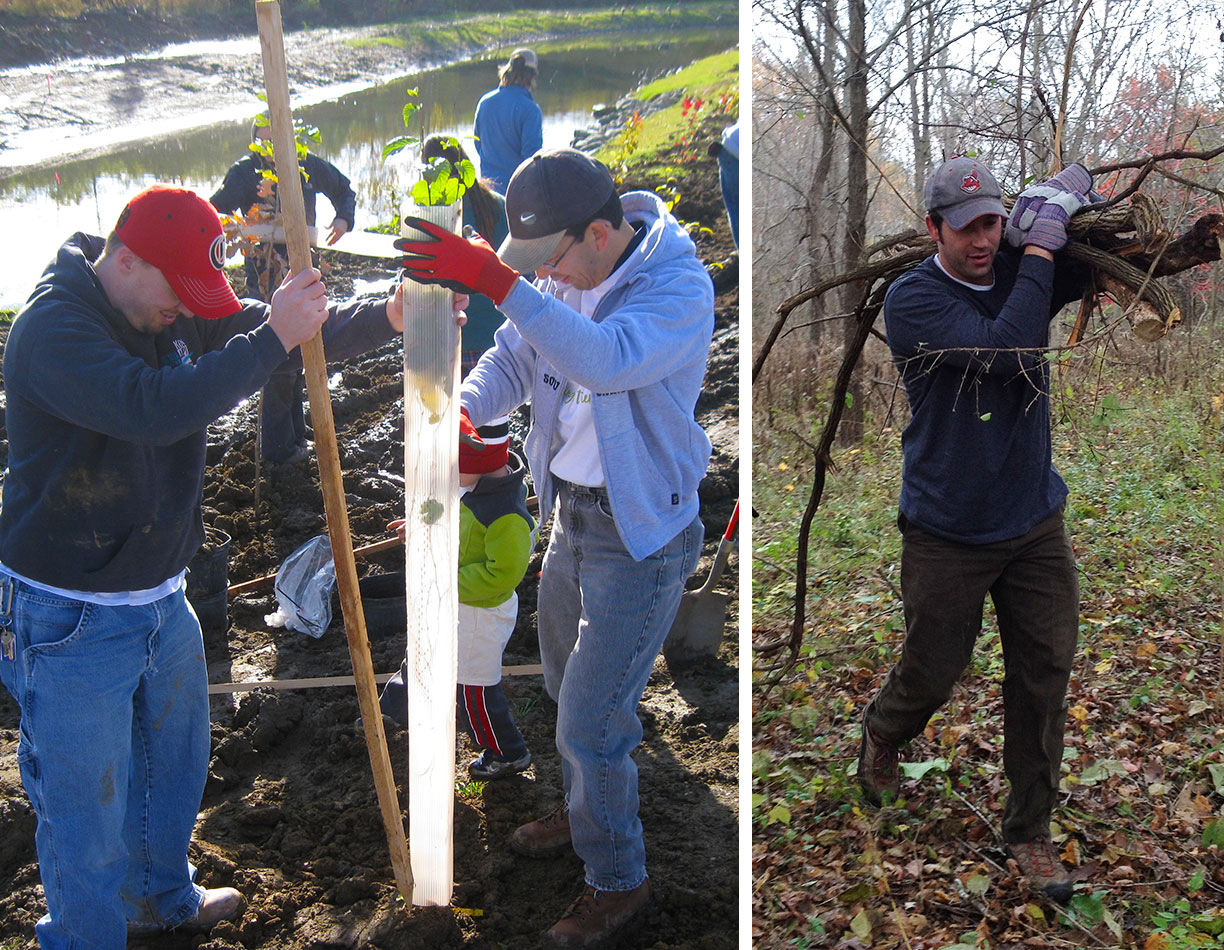
ESG Program: Environmental
Sustainable and Resilient Design
As a firm in the AEG space, we know that we are only as green as our designs. The Woolpert team provides clients with an array of services focused on sustainability and resilience:
- Assessment, design and life cycle cost analysis of energy systems/retrofits
- Building analysis (energy, envelope, daylight)
- Building information modeling
- High-performance and sustainable building design
- Low-impact design
- Master planning
- Water management
As of summer 2021, Woolpert has achieved the following sustainability credentials:
- 100% LEED certification success rate
- 70 LEED platinum, gold and silver projects
- 63 LEED, WELL AP or other accredited staff
- Green Globes, SITES and Envision
We are committed to continuing education and credentialing programs in sustainable design work for our employees.


Carbon Reduction Policy
Woolpert has pledged the AIA 2030 Commitment and is committed to carbon-neutrality in our scope 1 and 2 greenhouse gas (GHG) emissions by 2030. We approach all our projects with a sustainability mindset: To protect the environment while delivering the highest-quality product to our clients.
To achieve this, we are renewing intentionality around a corporate sustainability report that includes an accounting of our GHG footprint. By working with our office, fleet, building and property managers, we are pursuing opportunities to reduce GHG emissions from:
- Woolpert offices (scope 1)
- Woolpert fleet vehicles and airplanes (scope 1)
- Employee travel (scope 3)
- On- and off-site data storage (scope 3)
- Physical storage (scope 3)
- The buildings we design
Resource and Energy Consumption
One bright spot that emerged from the 2020 pandemic was the hybrid work world, and companies like ours who embrace the shift to remote work can now limit physical resources and use them more strategically to create less of an impact on the environment.
With so many employees working remotely, Woolpert moved to a shared workspace model to minimize the maintenance of unneeded space. Any employee who works less than four days each week in a physical Woolpert office no longer has a designated desk space. Personal workspaces and group meeting rooms can be reserved ahead of or just in time, based on availability.
As a tech-forward company, Woolpert relies on state-of-the-art computing infrastructure. To minimize physical components and their associated energy usage, we are migrating much of our data to a primarily cloud-based environment and employing virtual desktops where applicable. This decreased digital surface area enhances sustainability and limits vulnerability to cybersecurity threats.
| Year | Start of Year Baseline Offices Total (kWh) | Hardware Decommissions (kWh) | Reduction from Previous Year (Baseline Offices) | Increase from Acquisitions/New Offices (kWh) | Total = End of Year Baseline + Increase (kWh) |
|---|---|---|---|---|---|
| 2020 | 673,363.68 | 31,649.88 | N/A | 27,077.16 | 698,671.32 |
| 2021 | 671,594.16 | 37,037.28 | 0.26% | 161,260.21 | 752,612.77 |
| 2022 | 11.95% |
Our energy usage (kWh) dropped by 12% between 2021 and 2022 in terms of hardware reduction.
- Composting centers
- Filtered water dispensers
- In-house printing with recycled paper
- LED lighting
- Paper, cardboard, light bulb and battery recycling
- Smart thermostats
- Touchless hand dryers
External Environmental Impact
Woolpert’s sustainability experts create short- and long-range plans that empower clients to make informed decisions about energy usage and water safety.
To support the Air Force and Army, Woolpert’s master planners and engineers have been working on an installation energy and water plan for evaluating installation resilience.
- Energy is crucial for military installations to maintain mission-essential functions under adverse conditions, and these plans help decision-makers look across missions and various component plans before investing in energy upgrades.
- This holistic review helps ensure that requirements are not identified in isolation, capabilities are not developed in silos and resources are used efficiently.
For several clients, Woolpert developed a comprehensive water management program (WMP) to reduce the risk of infection brought on by waterborne pathogens or other hazards present in the water supply.
- We created the WMP by analyzing water treatment, distribution and consumption practices and incorporating data from the American Society of Plumbing Engineers and the Centers for Disease Control and Prevention.
- It meets the American National Standards Institute/American Society of Heating, Refrigerating and Air-Conditioning Engineers Standard 188-2018 industry requirements for risk management in building water systems.
- This WMP was created to support building owners and operators, water departments and health officials to develop programs that will help facilities protect occupants, operations and the water supply from health threats in the wake of COVID-19.
